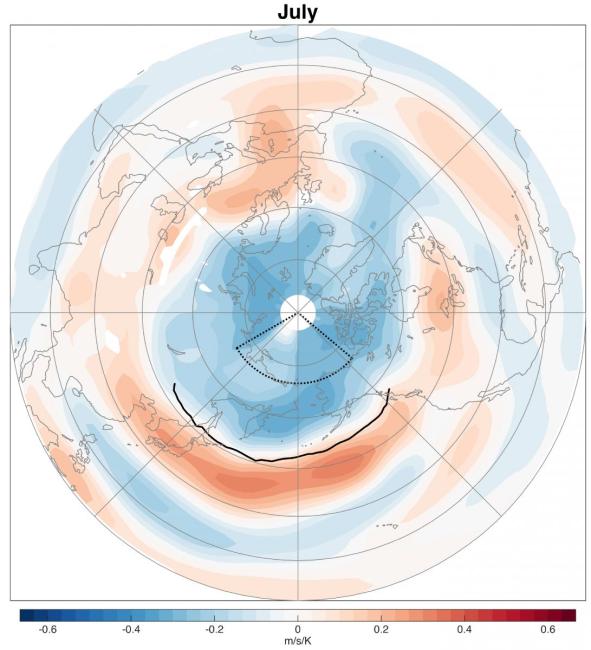Jet stream response to Arctic temperature swings
The unprecedented loss of sea ice and associated amplified warming of the Arctic in recent years has spurred a flurry of research on how these changes at high-latitudes may impact the jet streams and, thus, weather at lower latitudes. While there is ample model evidence that future Arctic warming and sea ice loss will modulate the changes to the jet stream by 2100 under climate change, there is much disagreement on whether we have already witnessed substantial impacts. One possible reason for the disagreement is the issue of causality. Most observational studies employ some form of correlation analysis in an attempt to quantify the response of the mid-latitude circulation to variations in sea ice loss and Arctic temperatures. However, as the saying goes, ‘‘correlation does not equal causation,’’ and thus there is concern that any links identified are instead a reflection of the atmosphere partially driving Arctic temperatures and ice loss, rather than the other way around.

In a recent study published in the Journal of Climate, authors Barnes and Simpson employ a statistical approach, termed “Granger causality,” to extract causal connections between Arctic temperature variability on ~weekly timescales and the Northern Hemisphere jet streams in model output from the Coupled Model Intercomparison Project (CMIP5). They demonstrate a robust influence of regional Arctic temperature swings on the North Atlantic and North Pacific jet stream positions and speeds, although Arctic temperatures can only explain a small fraction of the jet variations. This implies that factors outside of Arctic temperatures are crucial for predicting the behavior of the jet streams weeks ahead of time. The study further shows that Arctic temperature swings impact the jet streams’ positions more in the summer months compared to the winter months, and the authors suggest this can be largely explained by the seasonal migration of the jet stream with the solar cycle. Based on these results, it is possible that climate model errors in the position of the jet streams could cause the jets in some models to respond more or less strongly to Arctic temperature swings compared to what we should expect from the real world.
While this work demonstrates an influence of Arctic temperature swings on the behavior of the jet streams on ~weekly timescales, it does so using only global climate model output. A critical next step for this work is to perform a similar analysis using the observations and to compare the results with those from the models. Such work is currently in progress by Barnes’ research team.
Seasonal Sensitivity of the Northern Hemisphere Jet Streams to Arctic Temperatures on Subseasonal Time Scales (J. Climate)
1Colorado State University
2National Center for Atmospheric Research
Topics
- Sea Ice
- Weather
- Modeling
- Arctic
- Air-Sea
